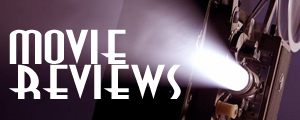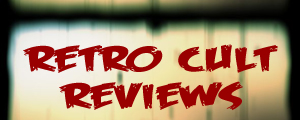

The original 1977 Suspiria is a 98-minute fever dream. It's a movie that has no time for complex plot or characters, as Italian director Dario Argento spends the whole film racing along from one color-splashed, otherworldly (and occasionally nightmarish) image to the next. A nearly straight remake of that film exists somewhere inside of the new Suspiria, director Luca Guadagnino's homage/expansion to the original movie. The backbone of the '77 film is ported over wholesale: Young American dancer Susie (Dakota Johnson here, stepping in for the Jessica Harper, who cameos) arrives at a prestigious German dance academy run by a coven of witches. Many of the other characters in Suspiria '18 are also pulled straight from Argento's film, including Susie's classmate, Sara (Mia Goth), and Madame Blanc (Tilda Swinton), the school's headmistress.
Yet despite all of those similarities, Guadagnino's film is an entirely new beast. For starters, it's nearly a full hour longer, and Guadagnino uses that time to stuff in a host of new ideas and thematic material — some of which works, some not so much. Set in Berlin during the year the original film was released, there is oodles of time devoted to the country's struggles with domestic terrorism and the process of rebuilding itself in the decades following World War II. German history hangs heavy over the film, as one of its new characters, a Jewish male psychiatrist named Dr. Klemperer (who's also played by Swinton in heavy makeup), struggles with the guilt he feels about escaping the Nazis when his wife did not. Unfortunately, this tangent never completely jibes with the rest of the movie. We also learn a lot more about the coven itself then we did in the '77 film — we see them dine together, hit the town together, vote on their leadership together. They are not always a unified force, and watching the witches navigate their own political entanglements is one of the more interesting additions made by Guadagnino and screenwriter David Kajganich.
Billed as a story told in six acts plus an epilogue by an opening title card, Suspiria plays at times like a straight, albeit surreal, drama. It also contains story arcs that feel pulled from more traditional thrillers, such as Klemperer's attempts to uncover the dance academy's secrets from the outside. But when the horror comes, oh my god does it come. Suspiria is anchored by two you-have-to-see-it-to-believe-it scenes of terror that may send unsuspecting audience members fleeing to the lobby. In the first, Susie auditions for the academy while a fellow dancer named Olga (Elena Fokina) attempts to escape the building. Olga finds herself trapped in a mirror-covered room, and while Susie forcefully yet beautifully moves through her routine in a different part of the academy, Olga's body is magically turned against her, her bones breaking, her face twisting in unimaginable pain, as her body is contorted into unfathomable positions. Guadagnino cuts back and forth between Susie and Olga, turning body horror into art. The second scene you won't soon forget is the climax, which I won't spoil, except to say that it's long, intense, bloody, disturbing and about as chaotic as cinema can get.
Both of those setpieces are fantastic, and there are also handful of dream sequences that feel overly Lynchian. But the movie goes long stretches (probably too long) where the supernatural shenanigans are moved to the background. Whereas Argento used that stunning cinematography to get you from one scare sequence to the next, Guadagnino's film has a much more muted look, with flatter imagery and lots of browns. (The original Suspiria's signature red doesn't make an appearance until the finale.) And while many are praising Thom Yorke's score, I found myself taken out of the movie by the portions of it that include his singing. To put it another way, give me Goblin over it any day.
Then there's the great Tilda experiment, which just didn't work for me. She's splendid in her primary role as Madame Blanc, of course, but the secondary role feels like stunt casting just for the sake of stunt casting, as there doesn't seem to be any thematic reasoning for having Swinton play both characters. The makeup admittedly looks fantastic, but ultimately Klemperer ends up being an old dude who sounds a hell of a lot like Tilda Swinton. Maybe it would have worked if the secret would have never gotten out, but going into the movie anticipating the dual role is something else that yanks you out of the spell Guadagnino is trying to weave.
The rest of the cast is solid. Johnson has yet to truly have a breakout, perception-shifting role, but her performance here, along with her sturdy turn in this fall's Bad Times at the El Royale, proves she's eager to do interesting work now that all the Fifty Shades nonsense is behind her. (I'm finding it more and more fascinating how many of these girls who are the faces of big mass-audience franchises — Johnson, Kristin Stewart, Jennifer Lawrence — immediately start gravitating toward much more challenging fare as soon as they're free of their contracts.) Johnson is beautiful but also carries heavy bags under her eyes that give Susie a haunted, weary look that benefits the film. Most impressive might be the dancing; one can only imagine the rehearsals Johnson and the other actresses playing students put in for the film's dazzling dance sequences.
If it sounds like I'm highlighting a bunch of aspects of Suspiria that really work … well, I guess I am. But this is also one of those movies where I fear the whole ends up being less than the sum of its parts. Suspiria contains images that will stick with you for a long time, but it also fails to blend its many interests — I haven't even mentioned the film's half-formed ideas on motherhood and religion — into a movie that feels like a unqualified success. That puts it a notch below the original, which managed to stay laser focused on its bizarre dream logic and was all the better for it.











